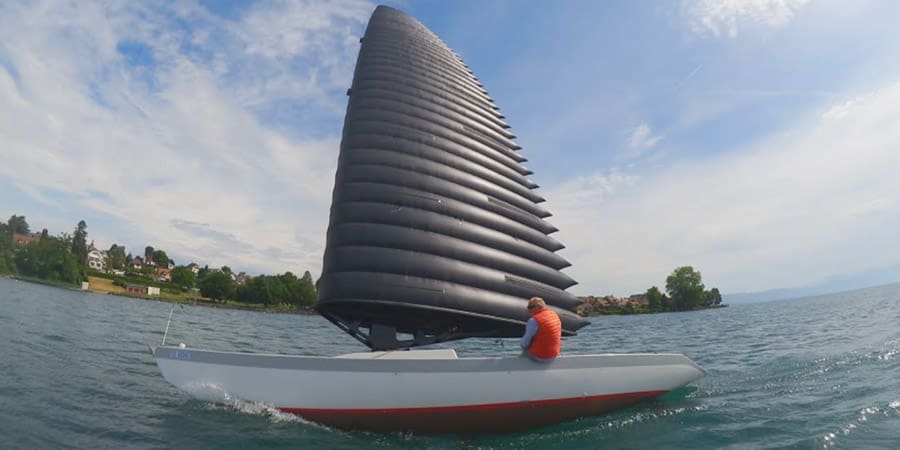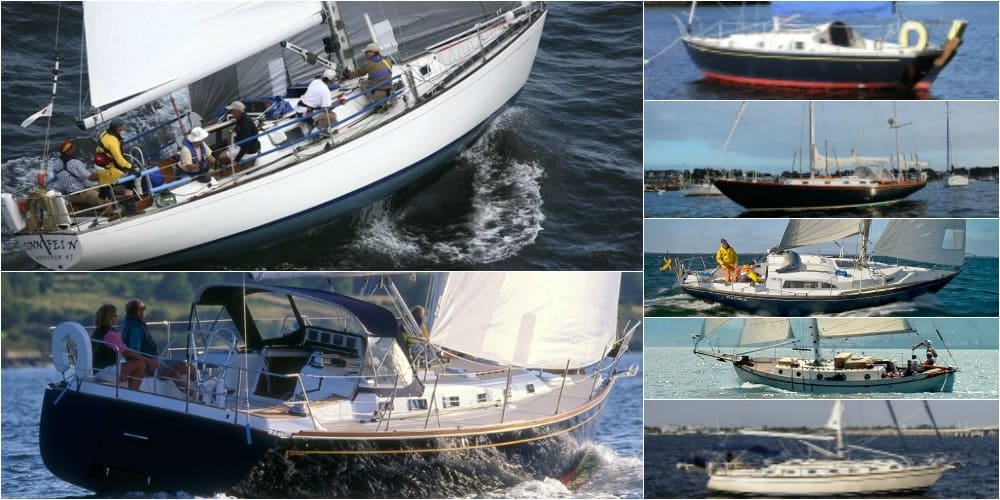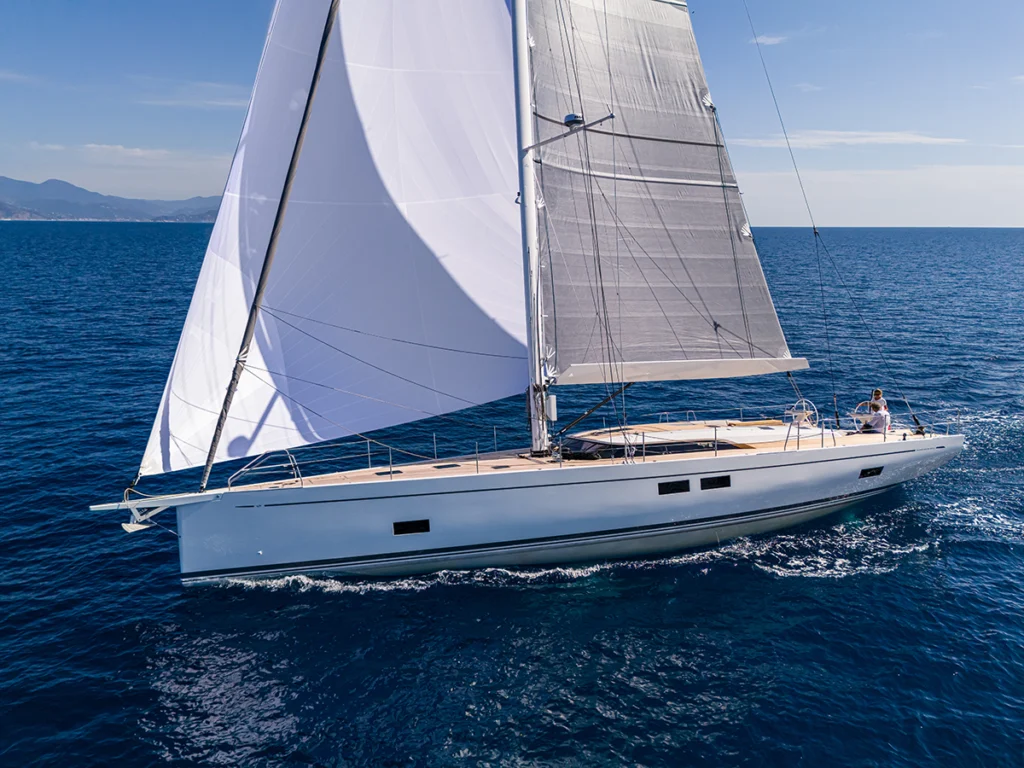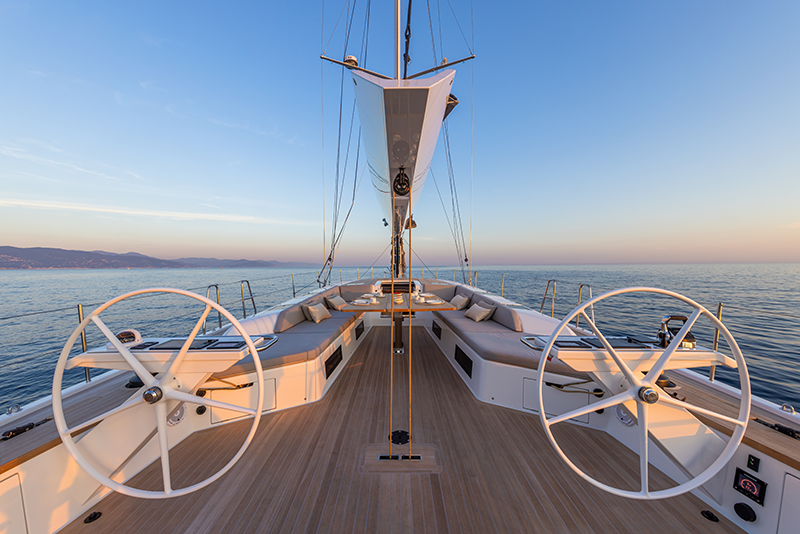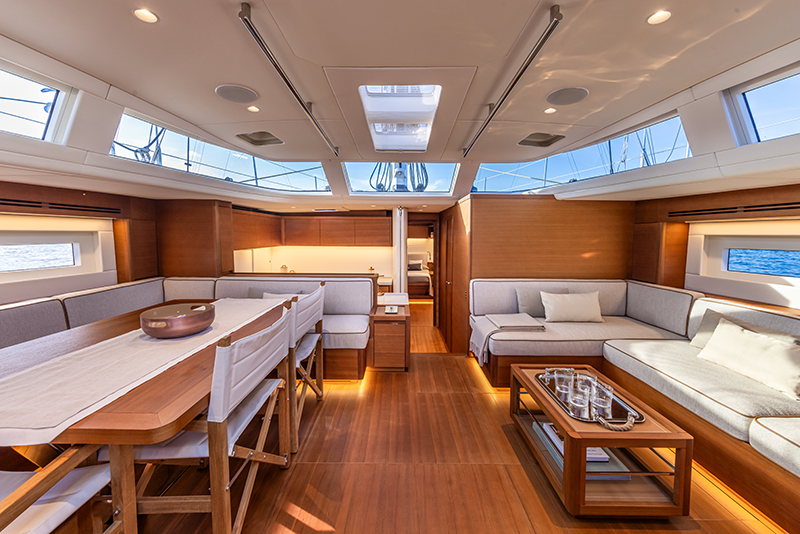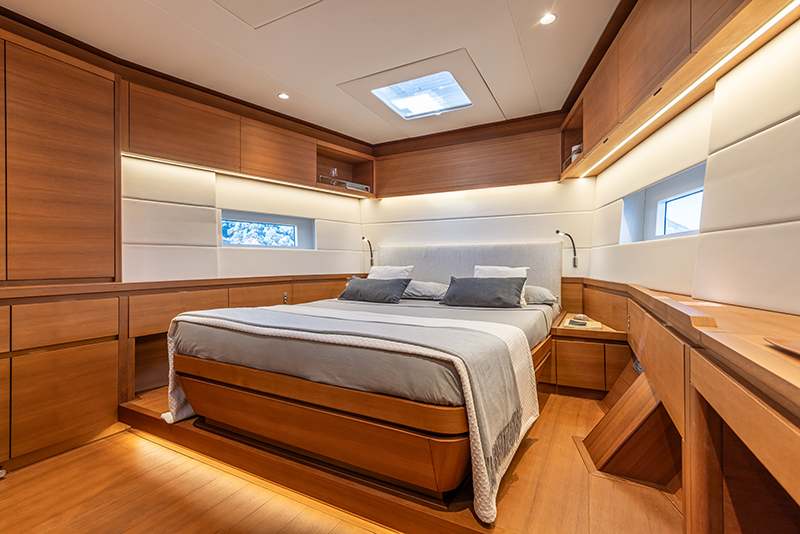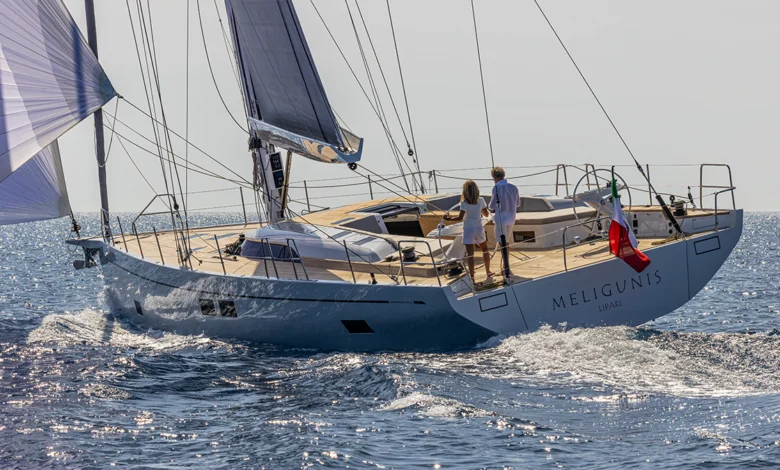
Following its debut at the Cannes Yachting Festival 2023, Cantiere del Pardo unveils an extensive photo shoot and the official video presentation of the Grand Soleil 65LC.
The Grand Soleil 65, the second model in the over 60-foot category, is offered in both Performance and Long Cruise versions, catering to the preferences of its owners. The Performance version appeals to those seeking a sportier design, while the Long Cruise version is tailored for bluewater cruising enthusiasts. Notably, both versions share the same hull design and utilize polyester-based vinylester and composites with carbon reinforcements to enhance structural rigidity.
In keeping with Cantiere del Pardo’s tradition and design ethos, the Grand Soleil 65 epitomizes the perfect blend of performance, style, and innovation. The shipyard’s extensive manufacturing expertise and forward-thinking solutions focused on sustainability and energy efficiency distinguish this new model. Once again, the concept development of the Grand Soleil 65 was guided and refined by Franco Corazza, a seasoned entrepreneur, accomplished racer with 12 Italian titles, 2 European titles, and 1 world title to his name.
“The 65-footer is the result of a totally Made-in-Italy design process that brings together a team of professionals representing Italian excellence in the yachting sector,” says Corazza. “That means designer and ORC champion Matteo Polli for the naval architecture, Marco Lostuzzi for the structural design and Nauta Design for the general layout as well as the deck and interior design.”
These top-tier talents, combined with the shipyard’s five decades of boatbuilding expertise, ensure the highest quality standards in the design and construction of the new Grand Soleil 65, tailored to the needs of owners who appreciate a bespoke approach.
Eco-Friendly Design
The Grand Soleil 65, like all yachts by Cantiere del Pardo, is designed with a commitment to environmental responsibility. The materials and construction methods used minimize environmental impact and maximize recyclability. Sustainable teak sourcing, laminated glass for improved insulation, the use of eco-resins and linen in composite lamination, water-based paints, and solar panels for renewable energy generation are just a few examples.
Naval Architecture
The hull is constructed by infusing epoxy-based vacuum vinylester resin into biaxial fiberglass and unidirectional carbon fabrics, resulting in a lightweight, rigid, and robust structure. Fiberglass and unidirectional carbon reinforcements stiffen the longitudinal and transverse structures, ensuring top-quality construction processes and onboard systems, all subject to rigorous quality controls.
Matteo Polli’s technical design for the Grand Soleil 65 aims to achieve the same performance targets as its predecessor, the Grand Soleil 72, but in a more compact size. The hull maintains a pronounced V in the bow and low wetted surface for reduced resistance, increased dynamic stability when heeling, and improved performance in light winds. The sail plan is optimized for efficiency, featuring a self-tacking jib for safe and easy sailing, even with a reduced crew. The choice of a single rudder blade and inverted T-shaped fin provides a balance of maneuverability and performance in various conditions.
Deck & Interior Design
Cantiere del Pardo, in collaboration with Nauta Design, has meticulously planned the deck and interior layouts to maximize available space. The Grand Soleil 65LC (Long Cruise) version emphasizes cruising characteristics while maintaining a fast and performance-optimized hull. The design exudes an inviting, contemporary, and elegant Italian style.
The deck architecture prioritizes a “step-free” concept for safe, unrestricted movement underway or at anchor. The family design DNA is evident in the roof geometry, seemingly floating on teak coamings that protect the helm cockpit. Below deck, the Long Cruise version offers a layout that optimizes space, with a salon divided into relaxation and dining areas. The absence of the technical/engine room between the aft cabins results in larger cabins, closer salon-cockpit alignment, and panoramic views. In addition, the Grand Soleil 65LC features a galley amidships in a spacious open area, along with the living space.
In contrast, the Performance version features a streamlined deckhouse and sportier design, with a side-galley set back toward the stern to maximize the dining and relaxation area, while the engine room is positioned traditionally behind the engines.
“The deck architecture of the Grand Soleil 65LC is conceived around a “step-free” concept for safe, freedom of movement under way or at anchor,” says Massimo Gino of Nauta Design. “Protection when sailing is provided by proper coamings of good height and the coach roof height is generous but balanced for a sleek look. The family design DNA is strongly recognizable in the roof geometry as it appears to be floating on the teak coamings that protect the helm cockpit.”
Beneath the deck, the Grand Soleil 65LC distinguishes itself slightly from the Performance version. Here, the main salon is divided into a separate relaxation and dining area, elevated above the level of the cabins to create space for the engine room below. This clever arrangement optimizes the size of the two aft cabins, making them more spacious due to the absence of the technical/engine room between them. This layout offers additional benefits, such as bringing the salon closer to the same level as the cockpit, resulting in a shorter staircase and a breathtaking 270-degree panoramic view from inside, fully utilizing the maximum beam of the yacht. Moreover, the Grand Soleil 65LC features a galley positioned amidships within a generous open space, adjacent to the living area.
In contrast, the Performance version, characterized by its sleek deckhouse and sportier design, features a side-galley set further aft to maximize the dining and relaxation area, while the engine room is conventionally located behind the engines.


